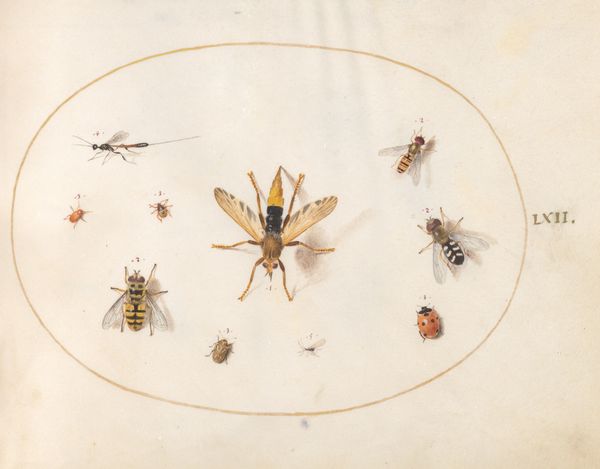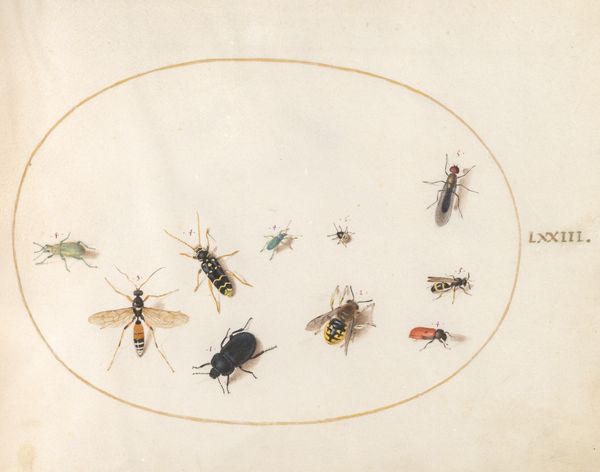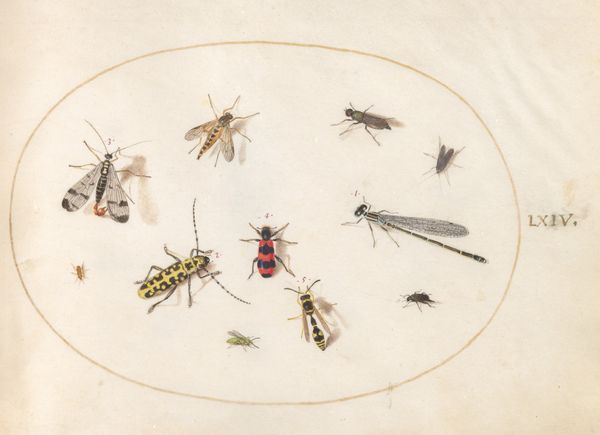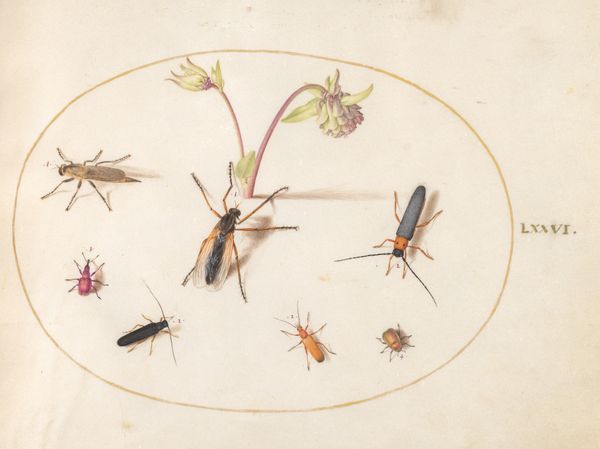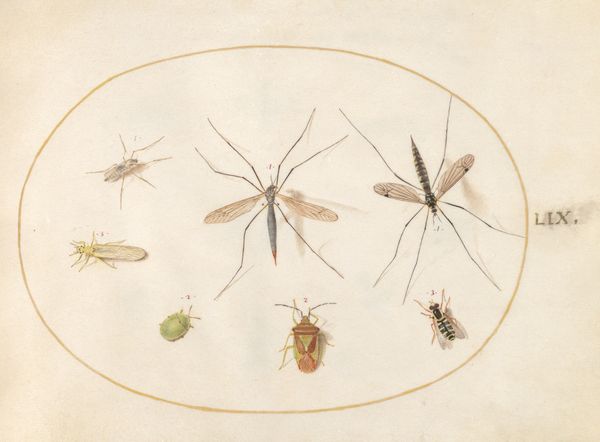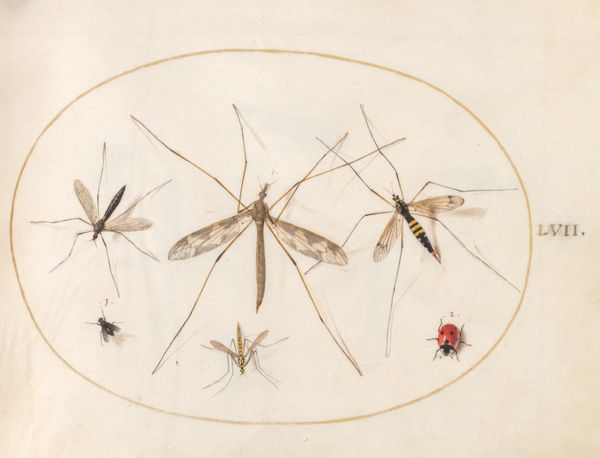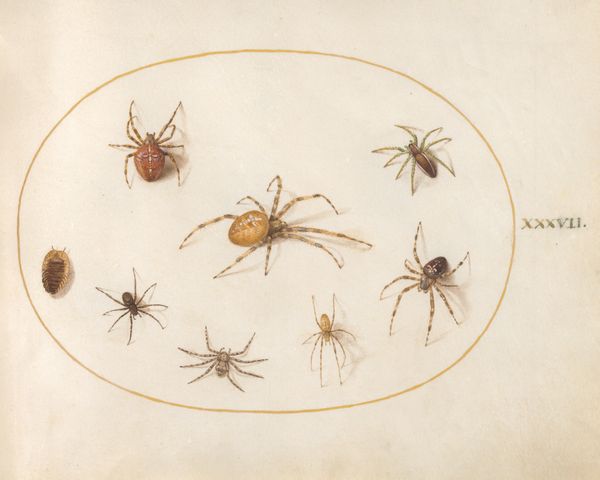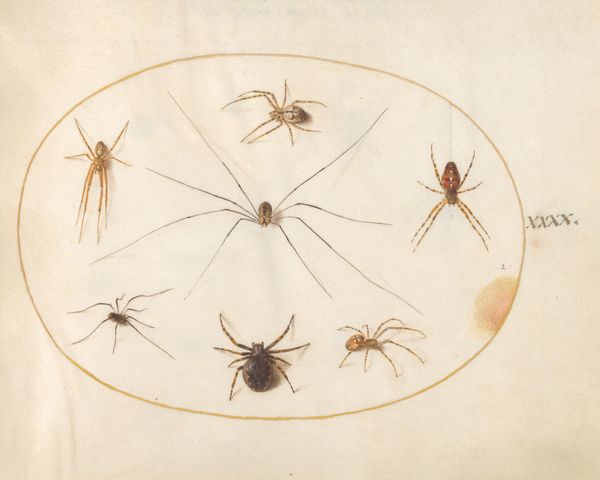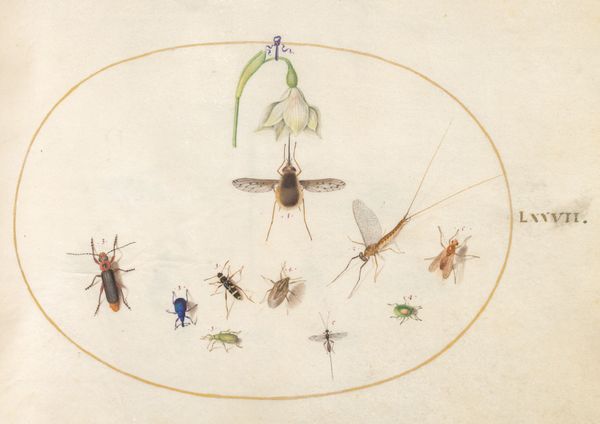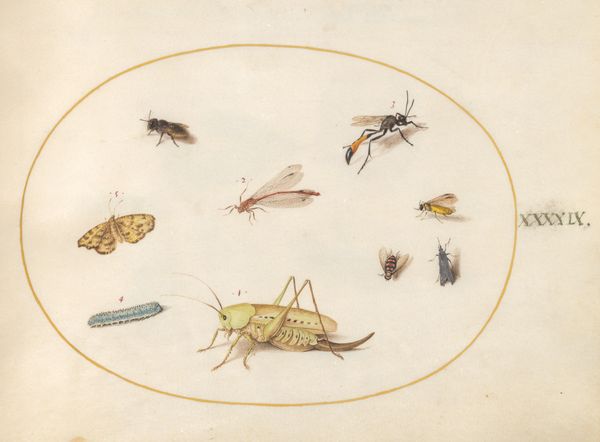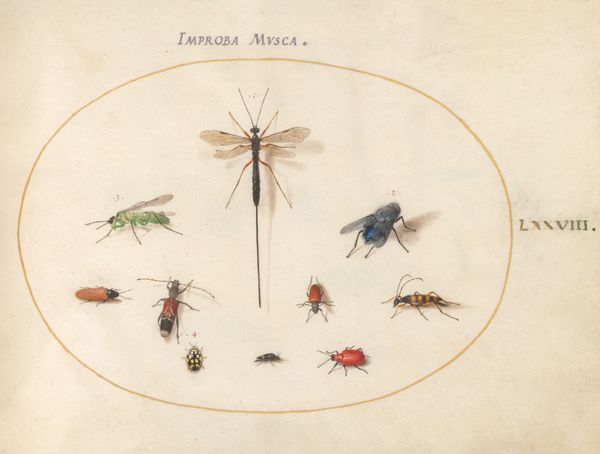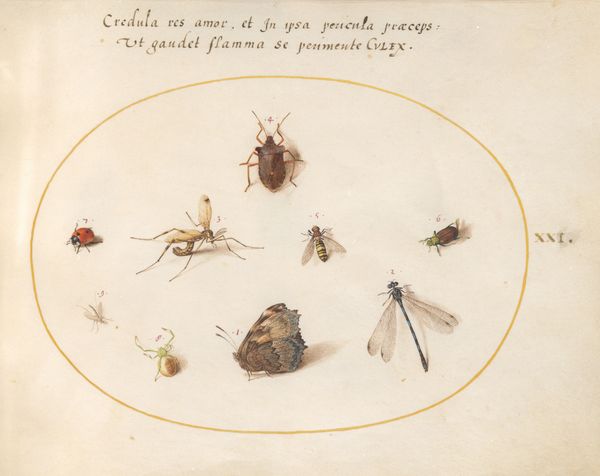
Plate 72: Shield Bug, Cinnamon Bug, Wasp, and Other Insects c. 1575 - 1580
0:00
0:00
drawing, coloured-pencil, watercolor
#
drawing
#
coloured-pencil
#
water colours
#
mannerism
#
watercolor
#
coloured pencil
#
watercolour illustration
#
watercolor
Dimensions: page size (approximate): 14.3 x 18.4 cm (5 5/8 x 7 1/4 in.)
Copyright: National Gallery of Art: CC0 1.0
Curator: Today we’re looking at "Plate 72: Shield Bug, Cinnamon Bug, Wasp, and Other Insects," created by Joris Hoefnagel around 1575-1580 using watercolor and colored pencil. Editor: My first thought is just how delicate they appear. The coloring is beautiful, and they almost seem to be floating in this oval space. Curator: It’s fascinating to consider this work within the context of its time. Hoefnagel was part of a courtly Mannerist circle, and his insect illustrations speak to the broader Early Modern interest in the natural world, but filtered through humanist sensibilities. These aren’t simply scientific observations; they’re imbued with aesthetic value and even moral symbolism, often representing ideas about life, death, and the transience of beauty. Editor: I'm intrigued by how the materials contribute to that effect. Watercolour lends itself so well to capturing the insects’ fragility, while the coloured pencil allows for precise detail in their forms and patterns. The choice of medium directly enhances the reading of transience you’re talking about, by almost creating a kind of fleeting portrait. Curator: Exactly! And there's a social element too. This wasn’t a publicly accessible artwork; it would have been privately enjoyed by wealthy patrons, highlighting the role of artistic production within elite social structures of the period, influencing courtly perceptions of nature and status. How the labor of production relates to the value of representation itself is a reflection of unequal power. Editor: It’s incredible to think about the labor involved. These meticulous depictions speak to the skill, and perhaps even specialized materials available to Hoefnagel that allowed him to bring the unseen or minuscule to such impressive life. How readily available would watercolour even be? The creation of artistic materials intersects with colonialism, trading networks, and artisanal knowledge in fascinating ways. Curator: Ultimately, what strikes me is how these small creatures, elevated through art, continue to resonate. They invite us to reflect on our relationship with the natural world, challenging anthropocentric views that privilege human perspectives above all else, and reminding us of our place in the larger ecosystem. Editor: Yes, that sense of scale really stands out for me now, the intimate level of focus brought to these specimens highlights their significance. By examining how artworks come to be through labour, materiality, and representation, we gain richer insight into their value as more than just imagery but tangible sites of social meaning and practice.
Comments
No comments
Be the first to comment and join the conversation on the ultimate creative platform.
